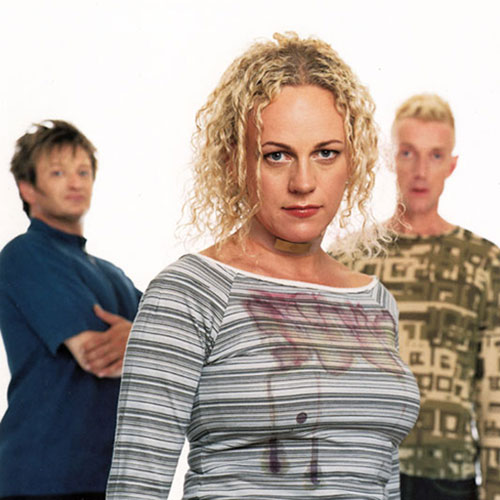Sunscreem Biography
by Sunscreem HQ / © 2002 Annalogic Ltd.
Paul Carnell (keyboards) and Lucia Holm (vocals) met in the mid-eighties. She’d done a degree in music and was a fan of modern electronic classical composers. He’d been in a band called Newspeak on Beggar’s Banquet and a few pub rock combos. Acid house changed both their lives.

“It was just total enlightenment, fantastic,” remembers Paul. “My big theory on it was that the cold war had come to an end and everybody was ready to party.”
A club called The Barn in Braintree became the crucible for Paul and Lucia’s musical awakening.
Watching some of the PA’s put on every night by the likes of Adamski and The Shamen, they realised that they could do better.
Marshaling a guitarist, a bass player, and a DJ with two dancers, they formed a six-piece live act which soon began putting on formidable performances, helped by elaborate set-dressing, clothes, and lighting from a friend who had studied fashion at St. Martin’s College. Within six gigs, they started to attract record label attention and, as Paul recalls, “before we knew it, Sony were offering us large amounts of money and we couldn’t really say ‘no’.”

Sunscreem’s run of hits began in 1992. Love U More was number one in three different club charts and made the top thirty, even though Radio One was then studiously ignoring most dance music. A tour of America supporting the Inspiral Carpets pushed Sunscreem onto US college radio, another with New Order followed.
Their first album, O3, sold 300,000 copies in the States and did well all over Northern Europe. But, in the way these things often happen, it all started to go a bit awry. One of their dancers left because his father had died during the American tour; the following year, their stylist and creative director was killed in a car crash. Then the guitarist left to form a band with his girlfriend, and the original drummer and founder member left due to drug problems.
Sunscreem’s second album, the defiantly titled Change Or Die was released in 1995 (*1). It contained two enormous club anthems, which sealed their reputation on the burgeoning American rave scene: When and Looking At You – the biggest club track of 95/96 and “it’s still being used to close the night now,” comments Paul proudly. Yet as they were getting more successful in America, dance music in Britain was moving towards a darker, less song-based style (think Underworld) in which Sunscreem no longer had much of a place.
Gallery





